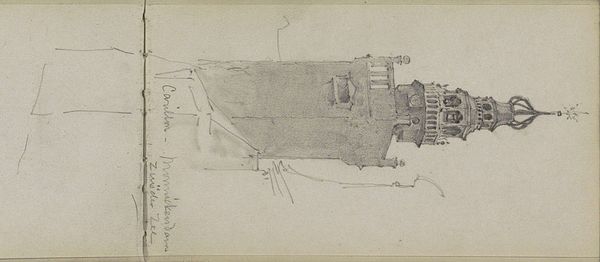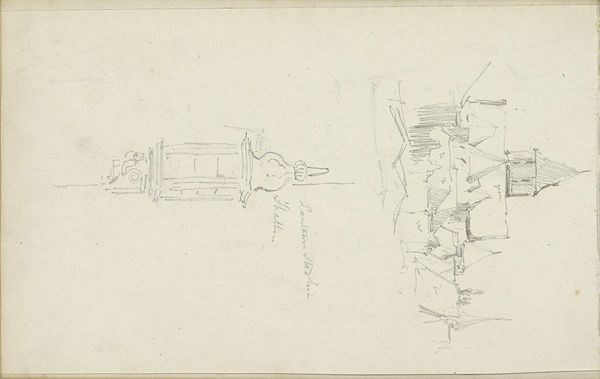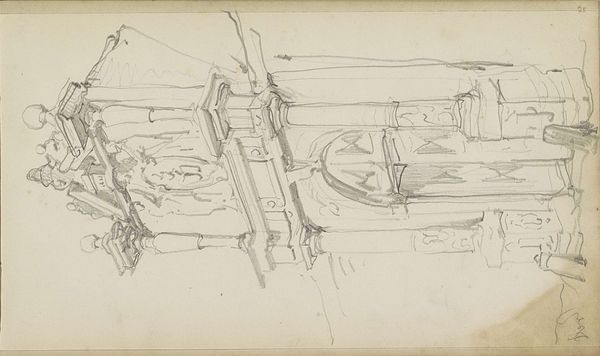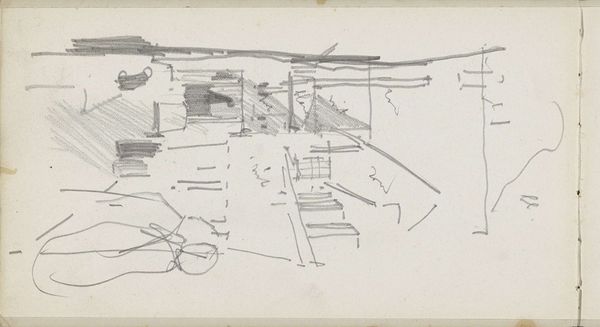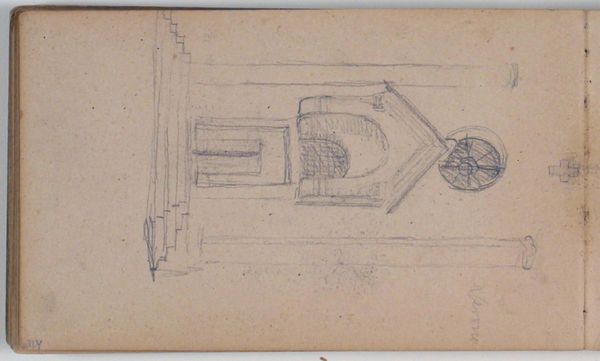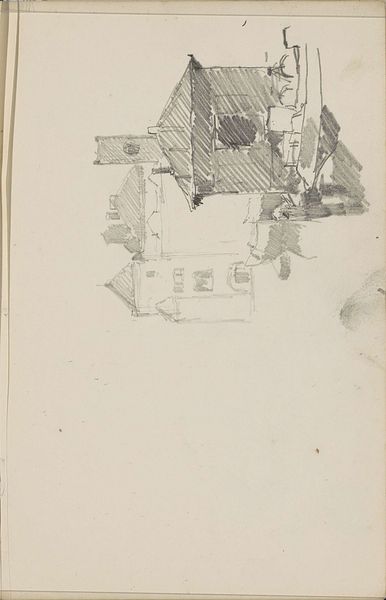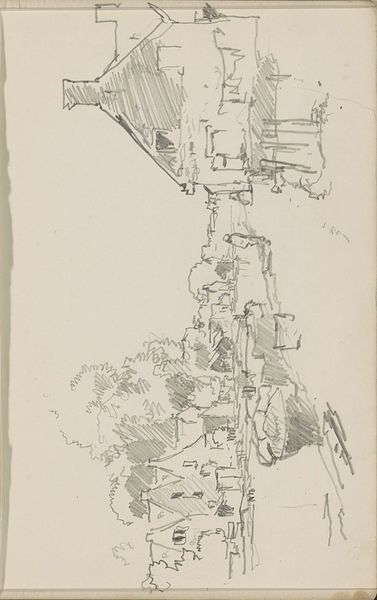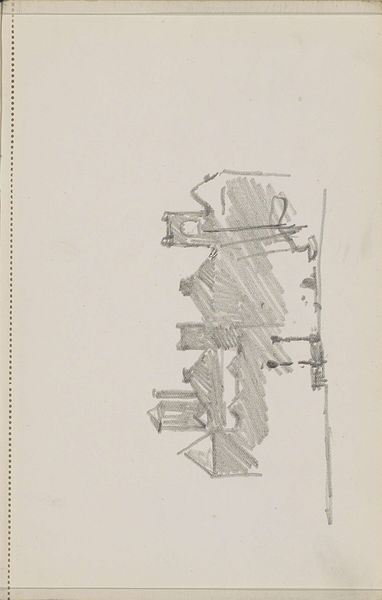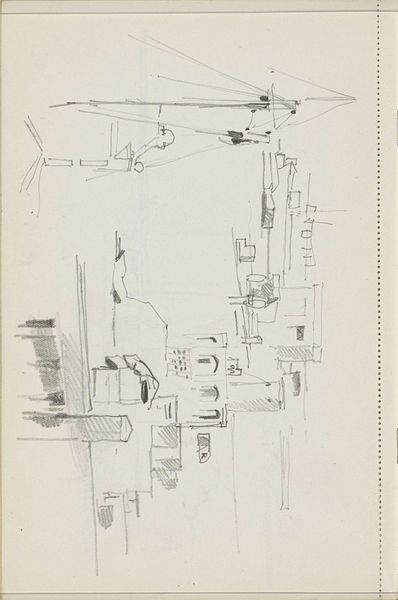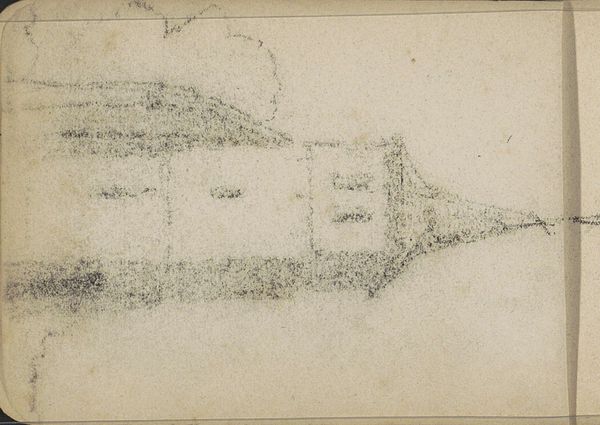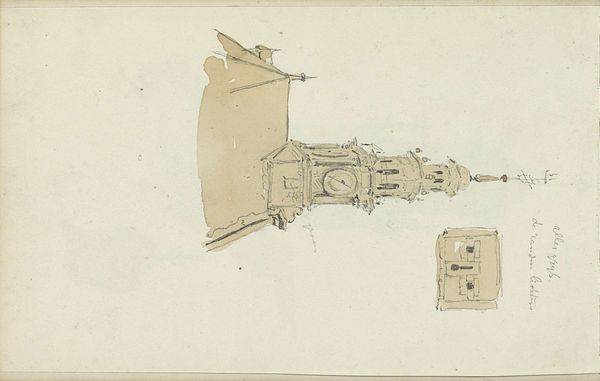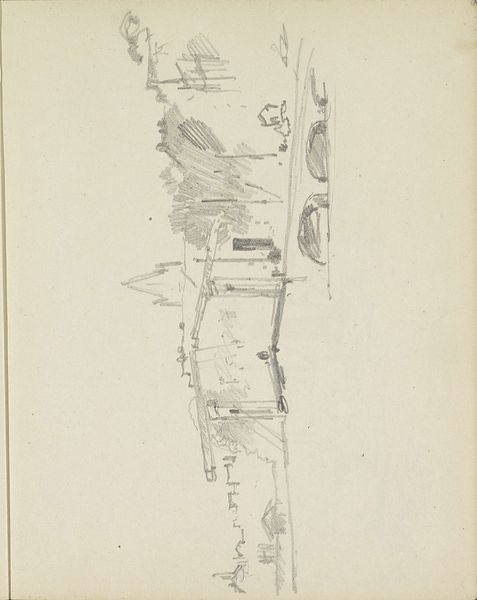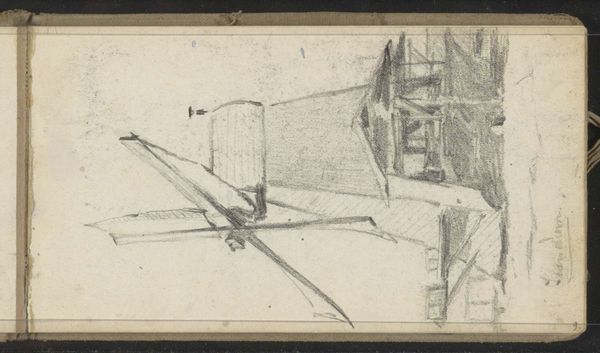
drawing, pencil, architecture
#
drawing
#
pencil
#
cityscape
#
architecture
#
realism
#
building
Copyright: Rijks Museum: Open Domain
George Clausen sketched the Hoofdtoren, or main tower, at the harbour of Hoorn in pencil, in September of 1895. The tower itself served for centuries as the main defence for this important Dutch trading port. Clausen's interest in this subject is most likely connected to the revival of interest in the historical vernacular that swept across Europe in the 1880s and 90s. Here, the historical associations are powerful. Clausen has sketched the tower at an oblique angle, emphasizing its bulk and the complexity of its form, while the written notation gives a precise sense of place and time. The style of drawing is informal and straightforward. Clausen may have intended to evoke the plain, honest character of the Dutch people. To understand art like this fully we need to research the cultural and political history of the Netherlands, along with the institutional history of art. What kind of art was collected and exhibited in the Netherlands at the time? How did Dutch artists see themselves in relation to the wider world? These are the questions that help us to see art as something thoroughly embedded in the life of its time.
Comments
No comments
Be the first to comment and join the conversation on the ultimate creative platform.
